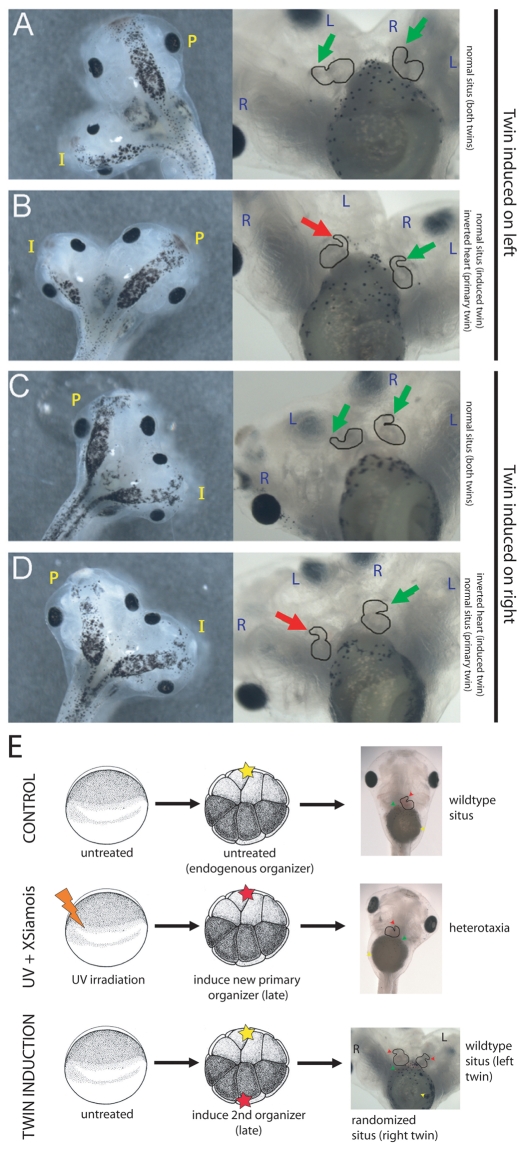Fig. 4.
Induced twins re-pattern the LR axis information established by the primary twin but the LR axis cannot be oriented de novo late in development. (A,B) In conjoined twins where the induced twin is located on the left, the left twin typically develops with proper heart situs. However, the twin on the right has randomized heart situs. (C,D) When the induced twin is located on the right, the primary twin, forming on the left, still develops with proper heart situs. However, the right-sided twin is randomized. Green arrow, correct heart looping; red arrow, inverted heart looping. The primary (P) and induced (I) twins are indicated, and the left (L) and right (R) halves of each twin are marked. (E) Schematic detailing experiments distinguishing the LR patterning in singleton versus twinned late organizers. In untreated embryos, tadpoles develop normal organ situs. In embryos that have patterning information ablated at the one-cell stage and a single organizer introduced at late stages, the embryo is often heterotaxic. In embryos that maintain the primary axis but develop a second axis late in development, the induced twin typically has normal organ situs (if it develops on the left). Yellow star, endogenous organizer; red star, induced organizer.

